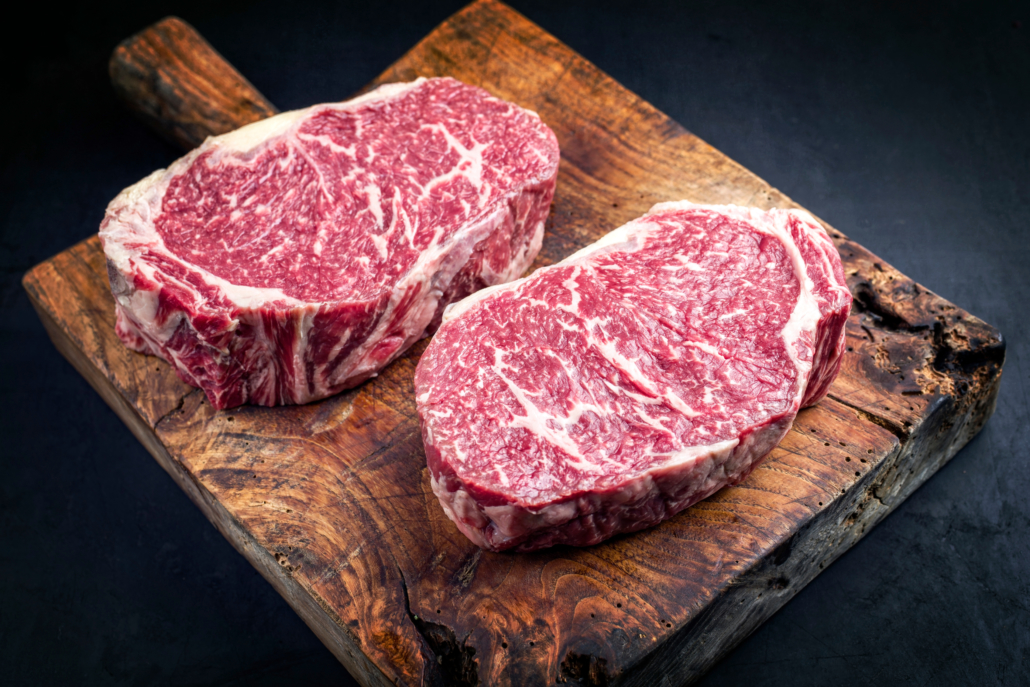We include products in articles we think are useful for our readers. If you buy products or services through links on our website, we may earn a small commission.
Is Blue Cheese Good for You? Health Benefits and Nutrition

Known for its pungent smell and rich flavor, you might be wondering if blue cheese is good for you.
In fact, blue cheese has numerous health benefits, some of which stem from those distinctive blue spots and veins.
In this article, we’ll explore all the science-backed health benefits of blue cheese.
Table of Contents
What is Blue Cheese, Anyway?
The name says it all–blue cheese is known for its distinctive blue spots and veins produced by beneficial bacteria cultures.
The most common culture in blue cheese is Penicillium roqueforti.
There are various types of blue cheese, including:
- Roquefort
- Danablu
- Carbrales
- Gorgonzola
- Blue Stilton
Blue cheese can be created from either or a combination of cow’s, goat’s, and sheep’s milk.
It’s important to note that the beneficial molds on blue cheese are healthy. Unlike molds that grow on grains, legumes, fruits, and vegetables, blue cheese cultures do not produce toxic carcinogenic compounds called mycotoxins.
Blue Cheese Nutrition
| Nutrients per 100g of Creamy Blue Cheese | |
| Calories | 425 |
| Fat | 43.3g |
| Saturated Fat | 26.7g |
| Carbohydrates | .2g |
| Protein | 13.3g |
| Fat: protein | 3.25:1 |
| Significant Vitamins and Minerals | |
| Vitamin B5 (Pantothenic acid) | 1.7mg 35% RDA |
| Vitamin B2 (Riboflavin) | 0.4mg (36% RDA) |
| Selenium | 8.6µg (16%) |
Health Benefits of Blue Cheese
Blue cheese provides an abundance of healthy fats, proteins, micronutrients, and bioactive compounds from the culturing and ripening process.
Together these nutrients provide health benefits, including
- Reduced risk of cardiovascular disease
- Reduced inflammation in arteries
- Reduced blood clotting in veins
- Lower blood cholesterol levels
- Reduced joint pain and arthritis relief
- Reduced risk of osteoporosis
- Slows aging
- Prevents obesity
- Protects against neurological disease
- Protects against certain cancers
- Reduces risk of diabetes
- Helps absorption of fat- vitamins
- Provides probiotics that benefit gut health
Let’s take a closer look at some of these key health benefits.
Supports Heart Health
Recent studies have revealed that varieties of blue cheese contain between 2900 and 4700 different bioactive peptides produced as enzymes break down dairy proteins.
One of these compounds called spermidine has been shown to reduce the risk of cardiovascular disease. Blue cheese has extremely high levels of spermidine at 262 nmol/g.

Studies show that compounds in Roquefort blue cheese reduce cholesterol, fight bacterial infection, are anti-inflammatory while regenerating tissues at sites of inflammation.
These properties have led researchers to hypothesize that Roquefort may contribute to the low prevalence of cardiovascular mortality in France.
Full-fat dairy in general has also been found to reduce the risk of heart disease.
A 2006 study of nearly 200 men and women aged 45-75 years found that people who regularly consumed dairy fat showed a reduced risk of a heart attack.
A 2017 analysis of 29 studies looking at data from 938,465 subjects found that people who ate10 grams of cheese (⅓ ounce) per day had a moderately lower risk of cardiovascular disease than those who did not.
Furthermore, it is also high in vitamin K2, with 36μg per 100g serving. Vitamin K2 is remarkably cardioprotective.
For every 10μg consumed daily, your risk of heart disease decreases by 9%.
Reduces Inflammation
As mentioned above, the cheese mold called Penicillium Roqueforti has both anti-inflammatory and regenerative properties.
These properties make blue cheese beneficial for reducing various inflammatory disorders like joint pain, arthritis, sinusitis, and asthma.
Slows Aging
The compound spermidine may slow aging.

Though researchers haven’t decoded the complex reasons for this effect, it is hypothesized that spermidine combats aging on multiple fronts: It supports cellular fitness, exerts a positive effect on multiple organs, including the heart, supports anti-cancer immune responses, and protects against neurodegenerative disorders.

Source: Madeo F, Carmona-Gutierrez D, Kepp O, Kroemer G. Spermidine delays aging in humans. Aging (Albany NY). 2018 Aug 6;10(8):2209-2211. doi: 10.18632/aging.101517. PMID: 30082504; PMCID: PMC6128428.
Reduces Risk of Osteoporosis
Due to its combination of calcium and vitamin K2, blue cheese can help reduce the risk of osteoporosis. K2 is essential to proper calcium absorption.
It’s also important to note that vitamin D is another important component of calcium absorption. Pair blue cheese with plenty of sunshine and vitamin D foods like eggs, salmon, pasture-raised pork, and canned tuna.
Prevents Obesity
Consuming cheese has been found to reduce excess body fat. Though it is common to be fat and healthy, excess body weight can also be a sign of underlying metabolic disorders.

A massive 2018 study of over 2,500 men revealed that after a five-year follow-up, participants who consumed higher amounts of cheese had a lower body mass index.
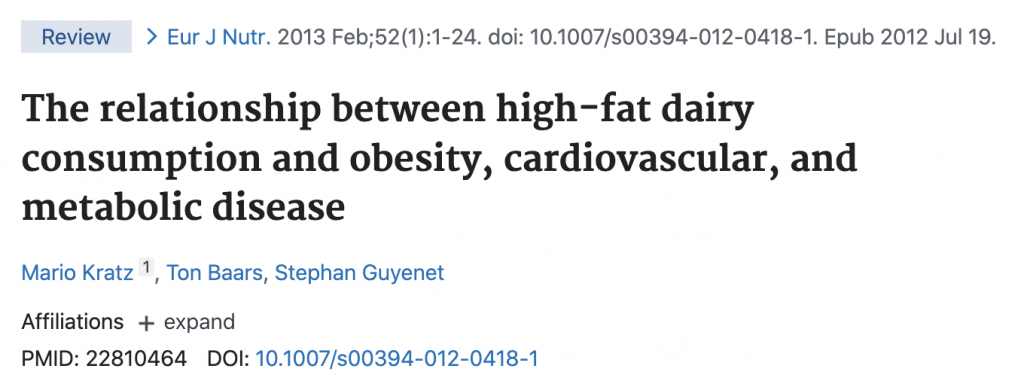
Likewise, a comprehensive review of 16 studies found that consuming cheese and other high-fat dairy products can lower your risk of obesity.
The study authors conclude: 
In addition to the presence of beneficial bioactive peptides in blue cheese, blue cheese also provides a combination of fat and protein that dramatically increases feelings of fullness and satiety.
When you’re satiated, you’re less likely to snack on ultra-processed foods high in vegetable oil and added sugars.
Neurological Protection
A 2018 study found that bioactive compounds in Camembert cheese called oleamide and dehydroergosterol reduce inflammation in areas of the brain associated with Alzheimer’s and dementia.

The study researchers concluded that blue cheese has neuroprotective properties, and that eating cheeses rich in these compounds protects against neurodegenerative disorders.9
A 2021 study published in the Journal of Alzheimer’s Disease linked eating cheese with improved cognition as we age.
Protection Against Cancer
Blue cheese, especially made from grass-fed dairy, can be a great source of a beneficial fat called conjugated linoleic acid (CLA).
Studies show that CLA can significantly inhibit the growth of cancer and tumors in the stomach, prostate, breast, and liver.
A 2005 study found that women who consumed at least four servings of high-fat dairy per day had a 34% lower risk of colon cancer.
A smaller study with 23 young men consuming 5.6 grams of CLA daily resulted in decreased cancer markers, including tumor necrosis factor and C-reactive protein.
Reduces Risk of Diabetes
The 2009 European Prospective Investigation into Cancer and Nutrition (EPIC) study examined data from 8 European nations, including 16,835 healthy and 12,403 diabetic participants.
Researchers found that eating cheese and fermented dairy was inversely related to incidences of diabetes. In other words, more cheese, less diabetes.
In fact, the study found that enjoying only 55 g/d total of cheese and/or yogurt was associated with a 12% reduction in the incidence of type 2 diabetes.
Probiotics
The Penicillium roqueforti culture that makes blue cheese blue is extremely resilient. It can grow in very low-oxygen environments ( 0.3% oxygen and 20 to 25% carbon dioxide).
This means it can survive digestion and establish itself in your gut as a beneficial probiotic.
In fact, a recent study found that food fermenting fungi in Iron Age feces of slat miners indicated the presence of blue cheese and beer cultures.
How To Select
Most grocery stores carry blue cheese throughout the year. But if you’re a true blue cheese connoisseur, you may find that blue cheese is best during the summer after the spring-made cheese has had a few months to ripen.
You can make sure your blue cheese is good by smelling it. Though all blue cheese “stinks”, be aware of any ammonia scents which indicate that the cheese has gone bad.
Lactose-Free
If you have trouble with lactose, take solace in the fact that blue cheese is low enough in lactose to be considered lactose-free.
Types of Blue Cheese
There are six main types of blue cheese: Roquefort, Gorgonzola, Blue Stilton, Cabrales, Danablu, and Cambozola.
Each type of blue cheese varies by milk, preparation, taste, and texture.
Roquefort

Roquefort is made from ewe’s milk, making it an A2 dairy for people avoiding A1 casein foods.
Roquefort got its name from the french village Roquefort-Sur-Soulzon, where it was first made.
Blue Stilton
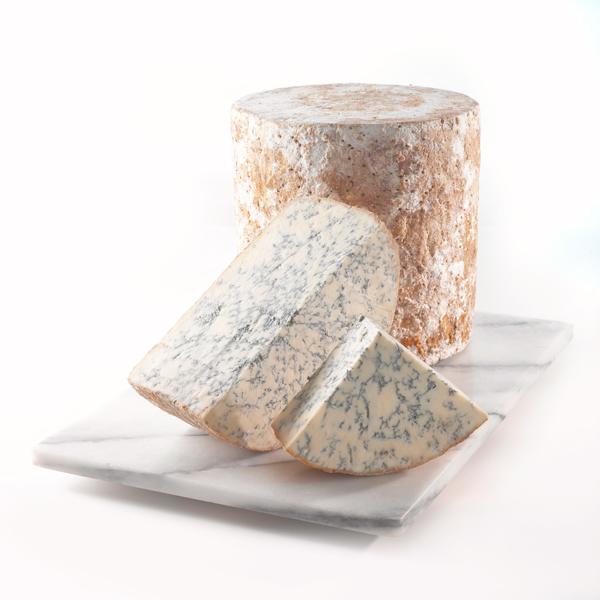
The English answer to Roquefort, Stilton, is named after the English town where it was first made in the early 18th century.
High in fat and salt, blue stilton makes an excellent high-fat, low-carb food and makes the list of the very best keto cheeses and carnivore cheeses.
Gorgonzola

First made in the Italian town of Gorgonzola, this is a salty cow’s milk blue. Depending on its preparation gorgonzola can be buttery or firm, crumbly, and with more or less of a “bite” from its distinctive blue veining.
Cabrales

A blue cheese made in the artisan tradition by rural dairy farmers in Asturias, Spain.
Cabrales blue cheese is considered wild and spicy in flavor and aroma. As it ages, these notes become more intense. It is made from cow’s milk, and there are mixed milk versions that give it even more of an acidic bite.
Danablu (Danish-Blue)
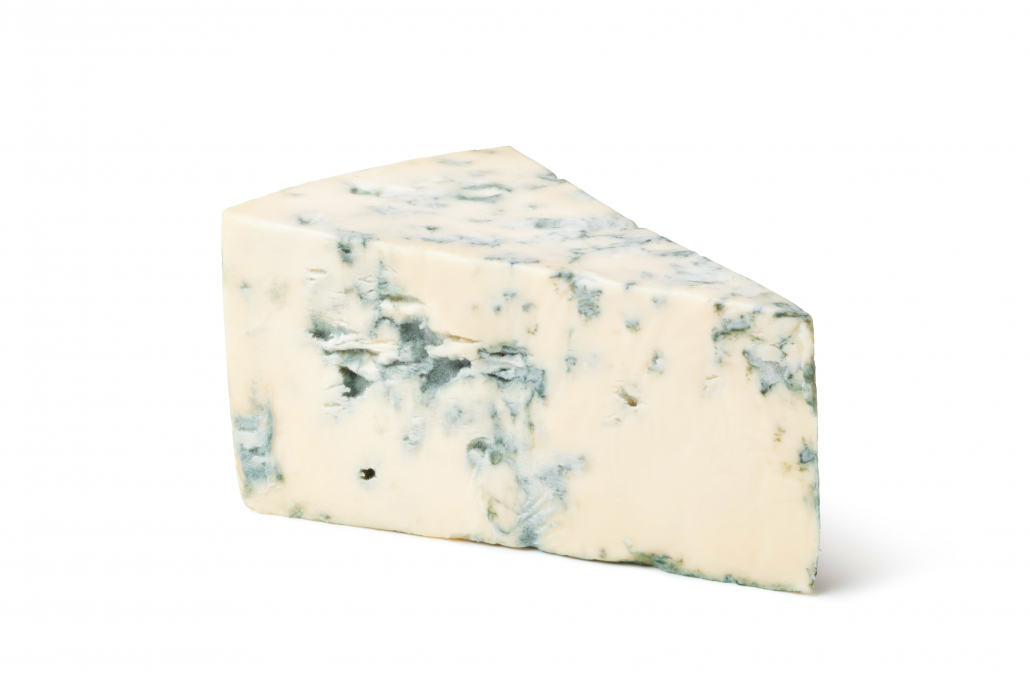
The Danish answer to the older blue cheeses. Danablu wasn’t invented until the 20th century in an attempt to create a Roquefort-style cheese. However, Danablu is milder in flavor.
Cambozola

Cambozola is known as a double or triple cream blue cheese, and is softer and fattier than all other blue cheeses.
It wasn’t invented until the 1980s but since then has become a favorite of keto and carnivore eaters thanks to this ultra-rich fat content.
Cambozola shines brightest when broiled over a succulent ribeye steak.
Re-evaluation of Saturated Fat
If all this talk about blue cheese has got your appetite up, but you’re afraid of the saturated fat content, this section is for you.
Since the 1950’s saturated fat has been incorrectly associated with heart disease in what’s known as the diet-heart hypothesis. This misinformed view is the legacy of Ansel Keys and a number of other forceful personalities.
But in fact there are no studies that support the connection between consuming animal fats and saturated fats with any cause of mortality, including heart disasese.
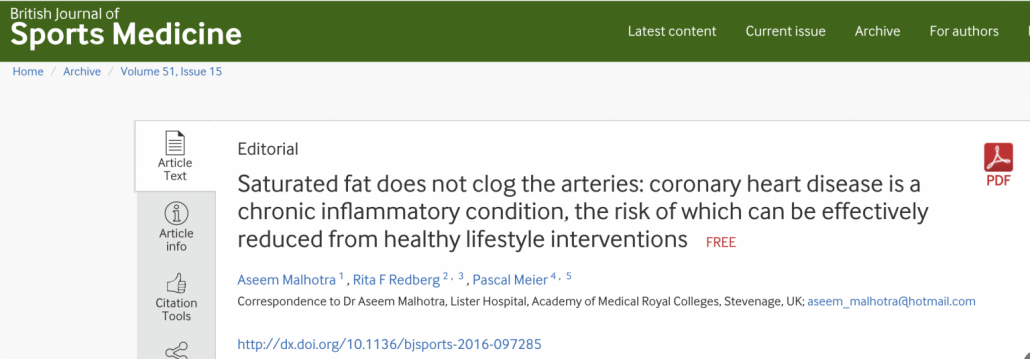
Though modern research has been telling us that saturated and animal fats are healthy, a plant-biased dietary establishment has been glacially slow at revising outdated and frankly dangerous low-fat recommendations.

But let’s get it straight: The science is clear that saturated fats and animal fats as part of whole food animal products is in fact very healthy, and not associated with stroke, heart disease, or cancer.

Looking specifically at cheese, 2017 meta-analysis of 9 large-scale studies on the health effects of consuming cheese concluded, “Our findings suggest that long-term cheese consumption was not associated with an increased risk of all-cause mortality.”
Blue cheese is officially free from the low-fat dietary prison. Enjoy!
Is Blue Cheese Good for You?: The Bottom Line
Based on its nutrition and science-baked health benefits, it’s clear that blue cheese is good for you.
It is loaded with healthy fats and proteins while providing substantial amounts of crucial vitamin K2.
But what makes it stand out among other cheeses is the presence of bioactive peptides produced in the culturing process.
Altogether, the nutrients in blue cheese offer numerous benefits, including:
- Supports heart health
- Reduces risk of osteoporosis and supports bone health
- Prevents obesity
- Neurological protection
- Anti-cancer properties
- probiotics












